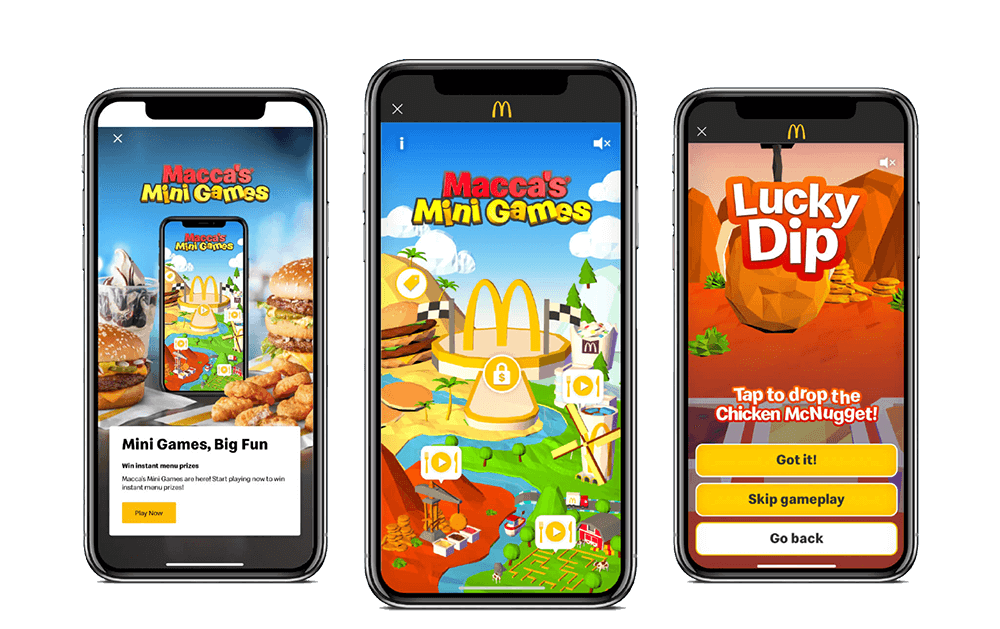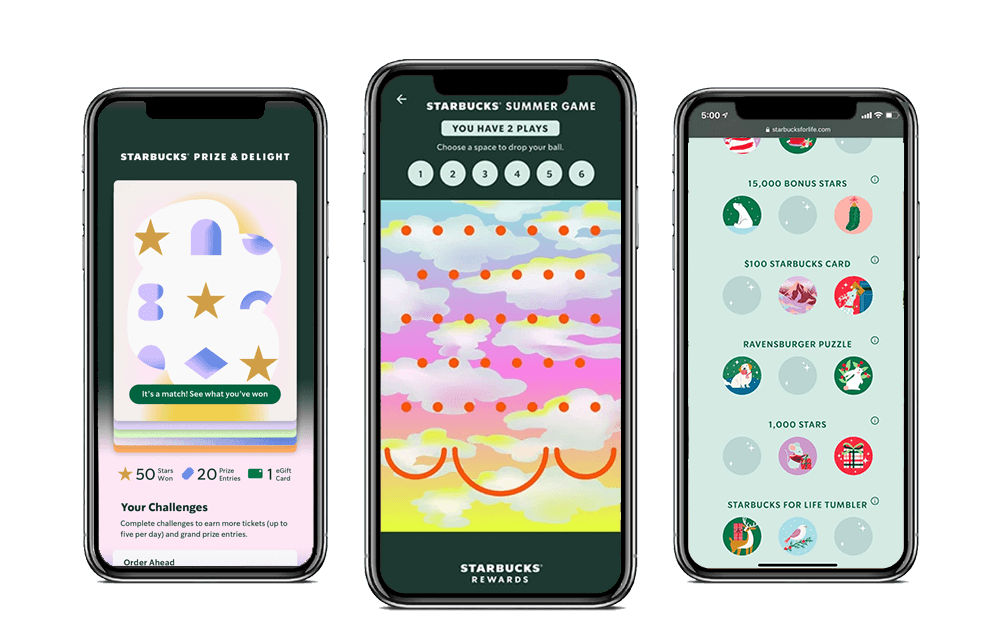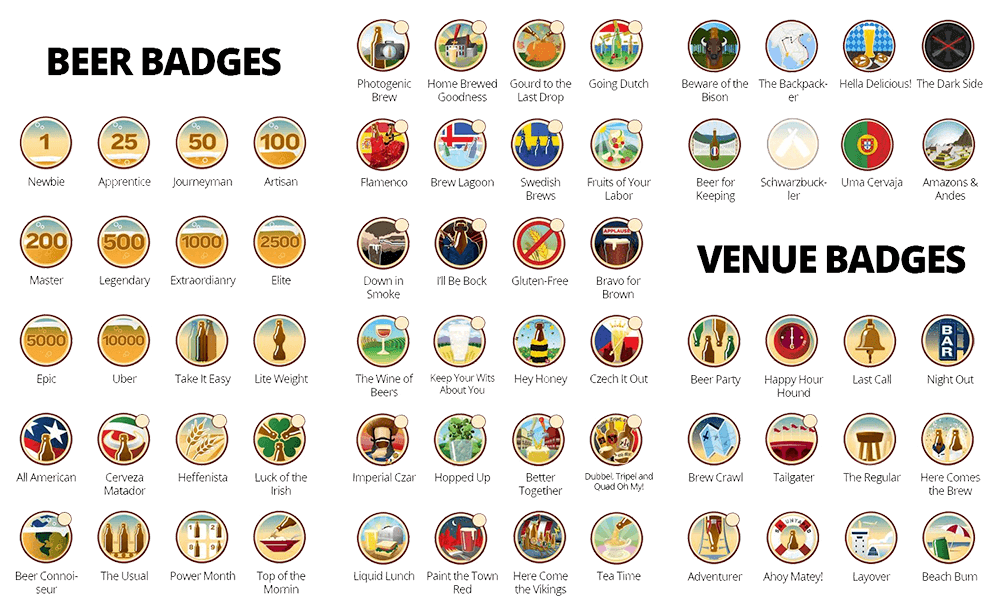
Blog

In-App Gamification
Apps from major retailers, food and clothing brands contain useful functions to easily find or order products. In addition, the app often contains a loyalty program and information about the stores, such as stock and opening times.
Many of these apps contain all kinds of gamification principles to ensure that people use the app more often, but also to stimulate sales and retention.

In this article we will take a closer look at the term 'in-app gamification' and explain how an app can become a success by applying gamification.

Source: The Marketing Store, McDonald’s Australia
Why in-app Gamification?
Gamification is often used to make (boring) tasks more fun and can be applied in all fields, from accounting to fashion. So you can also apply gamification for your app to make it more attractive to your target group.
The most commonly used objectives for adding gamification to an app are:
- Higher retention rate (how often the customer returns to your app)
- Higher return on in-app purchases or ad clicks
- Longer sessions (duration that the customer is engaged with the app and your brand)
- Positive user experience of the app and brand
The app does not have to be completely redesigned for this. Gamification can be added as an extra layer to the existing app built. By using current features, such as points in a loyalty program or discount in the shop, you can reward customers through gamification.
What are the benefits of gamification in apps?
The three biggest benefits of using gamification in app are:
1. Better reasons to use the app more often
An app that only shows the opening hours of the nearest restaurant will only be used when needed. You can expand the app with, for example, a voting function for menus (which menu do you want on the menu next week?), a weekly quiz with facts or tips and points for discounts on healthy menus. This ensures that the app will be used more often and that there will be interaction with your customers.
2. More app installs and shares
Games and gamification elements in the app ensure that your customers enjoy using your app. They will therefore recommend it more often to friends and share it on social. Also positive app reviews will encourage the target audience to choose your app to install.
3. Extra channel for push notifications
Apps often have a single purpose, such as ordering products or viewing services. As a result, the app is only used once, when your brand is on top of mind. If you now have a large number of app users, you can send them push messages as soon as there are important events such as Black Friday, Super Sale or a new game. This allows you to determine (to a certain extent) when the users have your app 'on top of mind'.
1+2+3 = More sales
These three advantages mentioned above do ultimately result in 'more sales'.
- The app us used more often. Which means more chance of a purchase.
- More installs means a bigger audience.
- More contact with the target group means more 'on top of mind'.

Source: Gamification in the Starbucks app
In App gamification in practice
There are several gamification principles for apps that can help you achieve your goal. Below you will find the most commonly used principles that are also relatively easy to add.
1. In-app mini games
These are small games in the app itself. These mini games can easily be styled to the campaign (such as Christmas or summer) and therefore they can be used more often. Through the mini games you can give away (loyalty) points, discounts or prizes to your players.
2. Rewards
Rewarding app users is one of the most important principles to achieve a higher conversion on your marketing goals. A reward can be given out in the form of badges, points or a discount.

Badges in UnTapped encourage beer use ('responsibly') of as many different beers as possible from all kinds of regions.
There are several scenarios when you can reward an app user:
- Complete data entry or onboarding
- Play different games
- View or read certain content
- Share the app via social channels
- Achieving certain goals (as with UnTapped)
3. Competition
By showing the user of your app how she or he is doing compared to other app users, you create a competitive element. That in turn ensures that people will use the app more often to keep up. You can do this by adding a high score for mini games. But also by showing what others have just bought or what is popular with people with the same interests.
4. Add value
Everyone wants to mean something and feel important. If you influence, for example, new beauty products, the weekly menu or the opening hours of your gym via an app, this is considered a very valuable interaction.
You can reward customers who use the app a lot or make a lot of purchases by letting them have a say in choices. This creates exclusivity and extra value for this group of customers again.
5. Rewarding progress
The app should provide and reward constant progress. So you have never "played" the app. This keeps people using the app. You can do this by regularly offering new games, new badges and new content.
As you've read, you can apply gamification principles in-app, without having to change the entire app structure. You quickly achieve added value and loyalty with current and especially new app users. The aim of all this is to boost the sales. From app user to CEO, everyone is happy :-)
Interested in Marketing Games?
Thanks for contacting us!
Your message has been sent. We will be in touch within one business day to answer your message.
Send us your message
We are happy to answer all your questions about gamification.
